Voltage Stability in Electrical Power Systems 1st Edition Farid Karbalaei
Visit to download the full and correct content document: https://ebookmass.com/product/voltage-stability-in-electrical-power-systems-1st-editio n-farid-karbalaei/
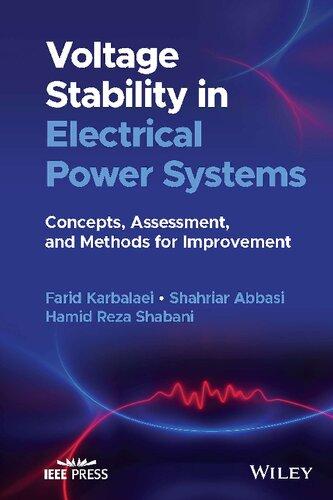
More products digital (pdf, epub, mobi) instant download maybe you interests ...
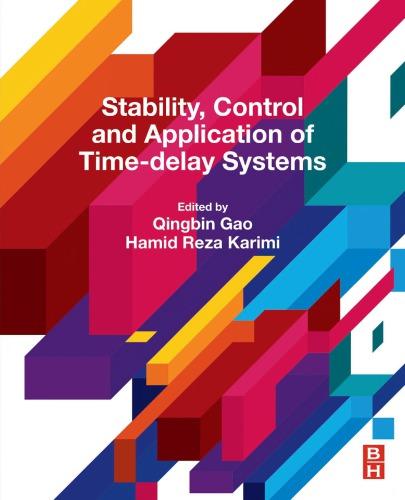
Stability, control and application of time-delay systems Gao
https://ebookmass.com/product/stability-control-and-applicationof-time-delay-systems-gao/
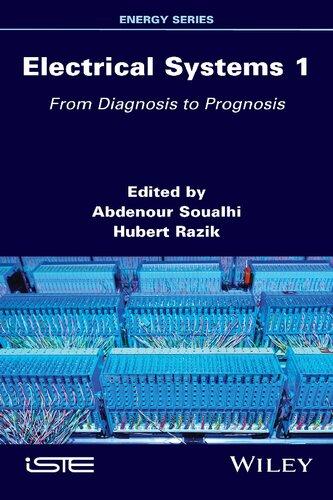
Electrical Systems 1 From Diagnosis to Prognosis Hubert Razik
https://ebookmass.com/product/electrical-systems-1-fromdiagnosis-to-prognosis-hubert-razik/
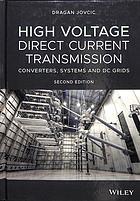
High voltage direct current transmission : converters, systems and DC grids Second Edition Dragan Jovcic
https://ebookmass.com/product/high-voltage-direct-currenttransmission-converters-systems-and-dc-grids-second-editiondragan-jovcic/
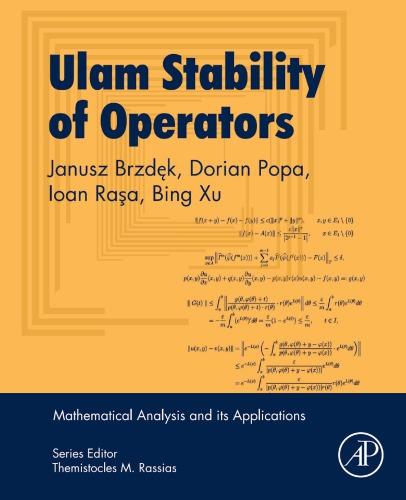
Ulam stability of operators Brzd■k
https://ebookmass.com/product/ulam-stability-of-operatorsbrzd%c8%a9k/

Mechatronics: Electronic Control Systems in Mechanical and Electrical Engineering 7th Edition William Bolton
https://ebookmass.com/product/mechatronics-electronic-controlsystems-in-mechanical-and-electrical-engineering-7th-editionwilliam-bolton/
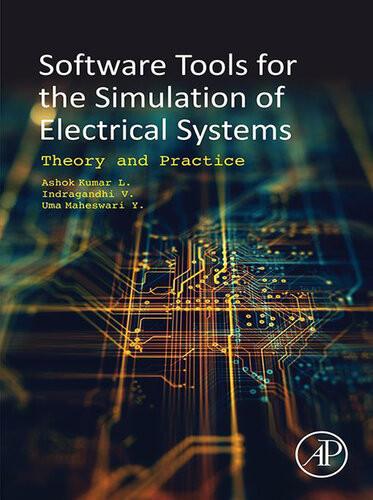
Software Tools for the Simulation of Electrical Systems
Ashok L. Kumar
https://ebookmass.com/product/software-tools-for-the-simulationof-electrical-systems-ashok-l-kumar/

Intelligent Data Mining and Analysis in Power and Energy Systems : Models and Applications for Smarter Efficient Power Systems 1st Edition Zita A. Vale
https://ebookmass.com/product/intelligent-data-mining-andanalysis-in-power-and-energy-systems-models-and-applications-forsmarter-efficient-power-systems-1st-edition-zita-a-vale/

Mechanical and Electrical Systems in Architecture, Engineering and Construction 5th Edition – Ebook PDF Version
https://ebookmass.com/product/mechanical-and-electrical-systemsin-architecture-engineering-and-construction-5th-edition-ebookpdf-version/
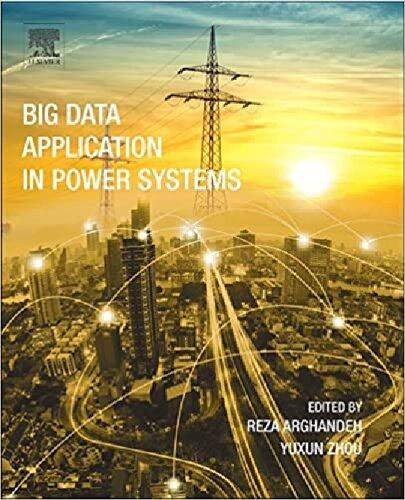
Big Data Application in Power Systems Reza Arghandeh
https://ebookmass.com/product/big-data-application-in-powersystems-reza-arghandeh/
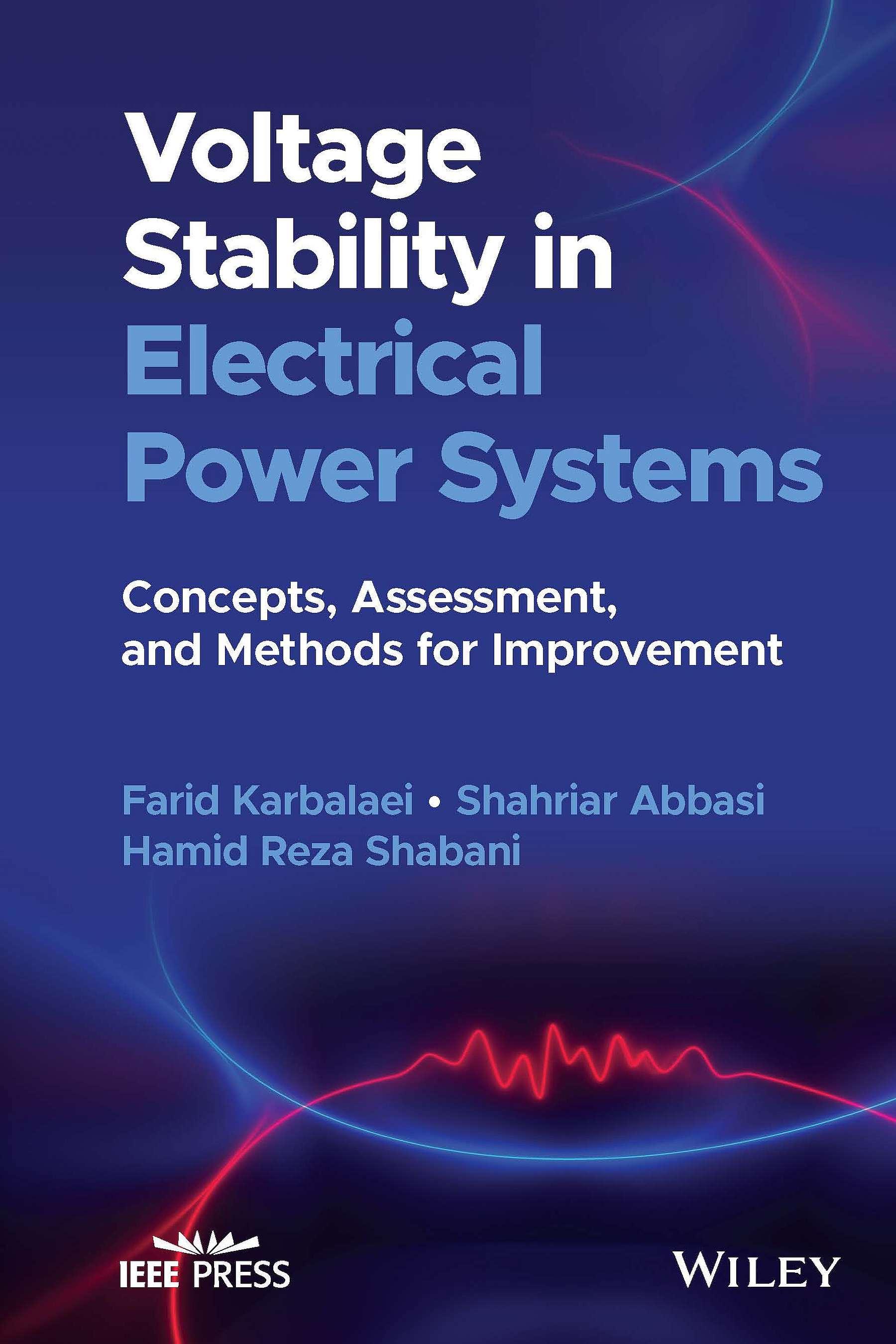
VoltageStabilityin
ElectricalPowerSystems
JónAtliBenediktsson
AnjanBose
AdamDrobot
Peter(Yong)Lian
IEEEPress
445HoesLane
Piscataway,NJ08854
IEEEPressEditorialBoard
SarahSpurgeon, EditorinChief
AndreasMolisch
SaeidNahavandi
JeffreyReed
ThomasRobertazzi
DiomidisSpinellis
AhmetMuratTekalp
VoltageStabilityinElectricalPowerSystems
Concepts,Assessment,andMethodsforImprovement
FaridKarbalaei
ShahidRajaeeTeacherTrainingUniversity Tehran,Iran
ShahriarAbbasi
TechnicalandVocationalUniversityofIran Kermanshah,Iran
HamidRezaShabani
AalborgUniversity Esbjerg,Denmark
Copyright©2023byTheInstituteofElectricalandElectronicsEngineers,Inc.Allrightsreserved.
PublishedbyJohnWiley&Sons,Inc.,Hoboken,NewJersey. PublishedsimultaneouslyinCanada.
Nopartofthispublicationmaybereproduced,storedinaretrievalsystem,ortransmittedinany formorbyanymeans,electronic,mechanical,photocopying,recording,scanning,orotherwise, exceptaspermittedunderSection107or108ofthe1976UnitedStatesCopyrightAct,without eitherthepriorwrittenpermissionofthePublisher,orauthorizationthroughpaymentofthe appropriateper-copyfeetotheCopyrightClearanceCenter,Inc.,222RosewoodDrive,Danvers, MA01923,(978)750-8400,fax(978)750-4470,oronthewebatwww.copyright.com.Requeststo thePublisherforpermissionshouldbeaddressedtothePermissionsDepartment,JohnWiley& Sons,Inc.,111RiverStreet,Hoboken,NJ07030,(201)748-6011,fax(201)748-6008,oronlineat http://www.wiley.com/go/permission.
Trademarks:WileyandtheWileylogoaretrademarksorregisteredtrademarksofJohnWiley& Sons,Inc.and/oritsaffiliatesintheUnitedStatesandothercountriesandmaynotbeusedwithout writtenpermission.Allothertrademarksarethepropertyoftheirrespectiveowners.JohnWiley& Sons,Inc.isnotassociatedwithanyproductorvendormentionedinthisbook.
LimitofLiability/DisclaimerofWarranty:Whilethepublisherandauthorhaveusedtheirbest effortsinpreparingthisbook,theymakenorepresentationsorwarrantieswithrespecttothe accuracyorcompletenessofthecontentsofthisbookandspecificallydisclaimanyimplied warrantiesofmerchantabilityorfitnessforaparticularpurpose.Nowarrantymaybecreatedor extendedbysalesrepresentativesorwrittensalesmaterials.Theadviceandstrategiescontained hereinmaynotbesuitableforyoursituation.Youshouldconsultwithaprofessionalwhere appropriate.Neitherthepublishernorauthorshallbeliableforanylossofprofitoranyother commercialdamages,includingbutnotlimitedtospecial,incidental,consequential,orother damages.
Forgeneralinformationonourotherproductsandservicesorfortechnicalsupport,pleasecontact ourCustomerCareDepartmentwithintheUnitedStatesat(800)762-2974,outsidetheUnited Statesat(317)572-3993orfax(317)572-4002.
Wileyalsopublishesitsbooksinavarietyofelectronicformats.Somecontentthatappearsinprint maynotbeavailableinelectronicformats.FormoreinformationaboutWileyproducts,visitour websiteatwww.wiley.com.
LibraryofCongressCataloging-in-PublicationData:
Names:Karbalaei,Farid,author.|Abbasi,Shahriar(AssistantProfessor), author.|Shabani,HamidReza,author.
Title:Voltagestabilityinelectricalpowersystems:concepts, assessment,andmethodsforimprovement/FaridKarbalaei,Shahriar Abbasi,andHamidRezaShabani.
Description:Hoboken,NewJersey:Wiley,[2023]|Includesindex. Identifiers:LCCN2022041340(print)|LCCN2022041341(ebook)|ISBN 9781119830597(hardback)|ISBN9781119830641(adobepdf)|ISBN 9781119830658(epub)
Subjects:LCSH:Electricpowersystemstability.|Electricpower systems–Control.
Classification:LCCTK1010.K3672022(print)|LCCTK1010(ebook)|DDC 621.319–dc23/eng/20220919
LCrecordavailableathttps://lccn.loc.gov/2022041340
LCebookrecordavailableathttps://lccn.loc.gov/2022041341
CoverDesign:Wiley
CoverImage:©SergMyshkovsky/GettyImages
Setin9.5/12.5ptSTIXTwoTextbyStraive,Pondicherry,India
Toourfamilies
Contents
AuthorBiographies xiii
Preface xiv
PartIConceptofVoltageStability,EffectiveFactorsandDevices, andSuitableSystemModeling 1
1HowDoesVoltageInstabilityOccur? 3
1.1Introduction 3
1.2Long-TermVoltageInstability 5
1.2.1ASimpleSystem 5
1.2.2VoltageCalculation 6
1.2.3IllustrationofVoltageCollapse 7
1.2.4TheReasonofVoltageCollapseOccurrence 8
1.2.5TheImportanceofTimelyEmergencyMeasures 11
1.3Short-TermVoltageInstability 13
1.3.1TheProcessofInductionMotorsStalling 14
1.3.2DynamicAnalysis 15
1.3.3StaticAnalysis 17
1.3.4TheRelationshipBetweenShort-TermVoltageInstabilityand LoadabilityLimit 19
1.4Summary 20 References 20
2LoadsandLoadTapChanger(LTC)TransformerModeling 21
2.1Introduction 21
2.2StaticLoadModels 24
2.2.1TheConstantPowerModel 24
2.2.2ThePolynomialandExponentialModels 25
2.3DynamicLoadModels 26
2.3.1ExponentialRecoveryModel 27
2.3.2InductionMotorModel 31
2.4TheLTCTransformers 35
2.4.1TheLTCPerformance 35
2.4.2TheLTCModeling 36
2.4.3TheLTCTransformerModel 38
2.5Summary 44 References 44
3GeneratorModeling 47
3.1Introduction 47
3.2SynchronousGeneratorModeling 47
3.2.1SynchronousMachineStructure 48
3.2.2DynamicEquations 48
3.2.3VoltageandCurrentPhasors 52
3.2.4Steady-StateEquations 54
3.2.5SimplificationofSynchronousMachineEquations 56
3.2.6SaturationModeling 57
3.2.7SynchronousGeneratorCapabilityCurve 59
3.2.8ExcitationSystemModeling 62
3.2.9GovernorModeling 63
3.2.10OverexcitationLimiter(OXL)Modeling 65
3.3WindPowerPlants 66
3.3.1Fixed-SpeedInductionGenerator(FSIG)-basedWindTurbine 69
3.3.1.1PhysicalDescription 69
3.3.1.2InductionMachineSteady-StateModel 69
3.3.1.3InductionGeneratorDynamicModel 72
3.3.2DoublyFedInductionGenerator(DFIG)-basedWindTurbine 75
3.3.2.1PhysicalDescription 75
3.3.2.2DFIGSteady-StateCharacteristic 76
3.3.2.3OptimumWindPowerExtraction[5] 77
3.3.2.4TorqueControl 78
3.3.2.5VoltageControl 80
3.4Summary 81 References 82
4ImpactofDistributedGenerationandTransmission–Distribution InteractionsonVoltageStability 83
4.1Introduction 83
4.2InteractionsofTransmissionandDistributionNetworks 83
4.2.1TheStudiedSystem 83
4.2.2StableCase(Case1) 85
4.2.3InstabilityDuetotheInabilityofTransmissionTransformer’sLTCto RegulateVoltage(Case2) 86
4.2.4InstabilityDuetotheInabilityofDistributionTransformer’sLTCto RegulateVoltage(Case3) 87
4.3ImpactofDistributionGeneration(DG)Units 89
4.3.1ConnectingDGUnitstoMVDistributionNetworks 89
4.3.2ConnectingDGUnitstoHVDistributionNetworks 90
4.4Summary 93 References 95
PartIIVoltageStabilityAssessmentMethods 97
5TheContinuationPowerFlow(CPF)Methods 99
5.1Introduction 99
5.2TheCPFElements 100
5.3Predictors 101
5.3.1LinearPredictors 101
5.3.1.1TangentMethod 101
5.3.1.2SecantMethod 103
5.3.2NonlinearPredictors 104
5.4Parameterization 104
5.4.1LocalParameterization 105
5.4.2ArclengthParameterization 105
5.4.3LocalGeometricParameterization 106
5.4.4AlternativeParameterization 108
5.5Correctors 108
5.6DeterminingthePredictionStepSize 109
5.7ComparisonofPredictors 111
5.8SimulationofLocalGeometricParameterizationMethod 114
5.9SomeReal-worldApplicationsofCPF 115
5.10Summary 116 References 117
6PV-CurveFitting 119
6.1Introduction 119
6.2CurveFittingUsingThreePowerFlowSolutions 121
6.3CurveFittingUsingTwoPowerFlowSolutions 122
6.4CurveFittingUsingOnePowerFlowSolution 124
x Contents
6.5ComparisonofDifferentPV-CurveFittingMethods 128
6.6Summary 128
References 130
7Measurement-BasedIndices 131
7.1Introduction 131
7.2TheveninEquivalent-BasedIndex 132
7.2.1Background 132
7.2.2RecursiveLeastSquare(RLS)Algorithm 133
7.2.3Calculationof XTh Assuming ETh asaFreeVariable 135
7.2.4ReductionofParameterEstimationErrors 138
7.2.5Simulations 142
7.3IndicesBasedonReceivedPowerVariations 146
7.4EarlyDetectionofVoltageInstability 149
7.5IndicesforAssessmentFault-InducedDelayedVoltageRecovery (FIDVR)Phenomenon 152
7.5.1ConceptofFIDVR 152
7.5.2FIDVRAssessmentIndices 154
7.6SomeReal-WorldApplicationsofMeasurement-basedIndices 157
7.7Summary 157
References 158
8Model-BasedIndices 161
8.1Introduction 161
8.2JacobianMatrix-BasedIndices 161
8.2.1Background 161
8.2.2SingularityofJacobianMatrixattheLoadabilityLimit 163
8.2.3SingularValuesandVectors 164
8.2.4Simulation 165
8.2.5ReducedJacobianMatrix 168
8.2.6EigenvaluesandEigenvectors 169
8.2.7TestFunction 172
8.2.8TheMaximumSingularValueoftheInverseoftheJacobianMatrix 174
8.3IndicesBasedonAdmittanceMatrixandPowerBalanceEquations 176
8.3.1LineStabilityIndices 178
8.3.1.1StabilityIndex Lmn 178
8.3.1.2FastVoltageStabilityIndex(FVSI) 179
8.3.1.3StabilityIndexLQP 179
8.3.1.4LineCollapseProximityIndex(LCPI) 179
8.3.1.5IntegralTransmissionLineTransferIndex(ITLTI) 180
8.3.2BusIndices 180
8.3.2.1StabilityIndex L180
8.3.2.2ImprovedVoltageStabilityIndex(IVSI) 182
8.4IndicesBasedonLoadBusesVoltageandGeneratorsReactive Power 184
8.4.1ReactivePowerPerformanceIndex(PIV) 184
8.4.2ReactivePowerLossIndex(RPLI) 186
8.5IndicesDefinedintheDistributionSystem 189
8.5.1DistributionSystemEquivalent 190
8.5.2Indices 191
8.5.3Simulations 194
8.6Summary 197
References 197
9MachineLearning-BasedAssessmentMethods 199
9.1Introduction 199
9.2VoltageStabilityDetectionBasedonPatternRecognitionMethodsand IntelligentSystems 199
9.2.1TheIntelligentSystemsTrainingApproaches 200
9.2.2TheIntelligentSystemsTypes 201
9.2.2.1ArtificialNeuralNetworks(ANNs) 201
9.2.2.2DecisionTrees(DTs) 205
9.2.2.3Support-VectorMachines(SVMs) 207
9.3Summary 214
References 214
PartIIIMethodsofPreventingVoltageInstability 219
10PreventiveControlofVoltageInstability 221
10.1Introduction 221
10.2DeterminationofLM 222
10.2.1StaticAnalysis 222
10.2.2DynamicAnalysis 224
10.3DeterminationoftheOptimalValueofControlActions 227
10.4ComputationofSensitivities 229
10.4.1ComputationofSensitivitiesBasedontheComputationof MLP 229
10.4.2ComputationofSensitivitiesWithouttheComputationofMLP 230
10.5DeterminationoftheMostEffectiveActions 233
10.6Summary 235
References 235
11EmergencyControlofVoltageInstability 237
11.1Introduction 237
11.2LoadShedding 238
11.2.1UVLSagainstLong-termVoltageInstability 239
11.2.1.1CentralizedRule-basedController 239
11.2.1.2DistributedRule-basedController 241
11.2.1.3Two-levelRule-basedController 243
11.2.2UVLSAgainstBothShort-andLong-termVoltageInstability 243
11.2.3LoadSheddingBasedonIncrementalValueofGeneratorReactive Power 244
11.2.4AdaptiveLoadSheddingBasedonEarlyDetectionofVoltage Instability 245
11.3DecentralizedVoltageControl 247
11.4TheuseofActiveDistributionNetworksinEmergencyVoltage Control 250
11.5CoordinatedVoltageControl 255
11.5.1ModelPredictiveControl 255
11.5.2PredictionofTrajectoryofVariables 256
11.5.2.1SimplificationsRequiredforEmergencyVoltageControlinthe TransmissionNetwork 256
11.5.2.2EulerStatePrediction(ESP) 259
11.5.2.3Two-PointPredictionMethod 259
11.5.2.4PredictionUsingTrajectorySensitivity 260
11.5.3CostFunction 263
11.6Summary 264 References 264
Index 267
AuthorBiographies
FaridKarbalaei receivedBScdegreeinpowerengineeringfromK.N.ToosiUniversityofTechnology,Tehran,Iran,in1997,andMScandPhDdegreesinpower engineeringfromIranUniversityofScienceandTechnology,Tehran,in2000and 2009,respectively.Currently,heisanassociateprofessorinShahidRajaeeTeacher TrainingUniversity.Hisresearchinterestsarepowersystemdynamicsandcontrol,voltagestabilityandcollapse,reactivepowercontrol,windpowergeneration, andoptimizationmethods.
PostalAddress:FacultyofElectricalEngineering,ShahidRajaeeTeacher TrainingUniversity,Lavizan,Tehran,Iran.Phone:+989124445325,Email: f_karbalaei@sru.ac.ir(Correspondingauthor)
ShahriarAbbasi receivedBScandMScdegreesinpowerengineeringfromShahidRajaeeTeacherTrainingUniversityTehran,Iran,in2008and2011,respectively.HereceivedPhDdegreesinpowerengineeringfromRaziUniversity, Kermanshah,Iran,2018.Currently,heisanassistantprofessorinTechnical andVocationalUniversityofIran,KermanshahBranch.Hisresearchinterests arepowersystemplanning,uncertaintymodeling,voltagestabilityandcollapse, windpowergeneration,andoptimizationmethods.
PostalAddress:TechnicalandVocationalUniversityofIran,KermanshahBranch, Kermanshah,Iran.Phone:+989169848928,Email:shahriarabasi@gmail.com
HamidRezaShabani receivedtheMSdegreeinpowerelectricalengineering fromShahidRajaeeTeacherTrainingUniversity(SRTTU),Tehran,Iran,in 2014.Also,hereceivedthePhDdegreefromIranUniversityofScienceandTechnology(IUST),Tehran,Iran,in2021.HisthesistitleinthePhDprogramwas “evaluationoflarge-disturbancerotorangleinstabilityinthemodernpowersystems, withhigh-Penetrationofwindpowergeneration.” Hecurrentlyworksasa postdoctoralresearcheratAalborgUniversity(AAUEnergy)intheEsbjergEnergy Section.Hismainresearchinterestsincludepowersystemstability,powersystem dynamicandcontrol,andrenewableenergies.
PostalAddress:TheFacultyofEngineeringandScience(AAUEnergy), AalborgUniversity,6700Esbjerg,Denmark.Phone:+4552780690,Email: hmdrzshabani94@gmail.com
Preface
Voltageinstabilityhasbeenconsideredabout60yearsagoandisstillamajorcause ofblackoutsinelectricalpowersystems.Sofar,extensivestudieshavebeenconductedonthistopicandtheresultofwhichispublicationofthousandsofarticles andafewnumberofbooks.Thearticlescoverawiderangeofsubjectsrelatedto voltagestability,includingpropersystemmodelingforvoltagestabilitystudies, onlineandofflinevoltagestabilityassessmentmethods,andmethodstoprevent voltageinstability,whichincludetwosetsofpreventiveandemergencymethods.
Beingfamiliarwiththeallabove-mentionedsubjectsisnecessaryforpower engineersbecauseeffectivepreventionofvoltageinstabilitynecessitatestimely detectionofit.Timelydetectionalsorequiresknowledgeofthemechanismofvoltageinstabilityandpropermodelingofthesystem.Sincevoltageinstabilityisa localphenomenon,contrarytorotorinstability,manymethodsofdetectingand preventingvoltageinstabilityareperformedlocally.Therefore,inadditionto theengineersworkinginthesystemcontrolcenter,allpowerengineersinlocal controlcentersshouldbefullyfamiliarwiththisfield.
Goodunderstandingofissuesrelatedtovoltagestabilityrequiresreadinghundredsofarticles.Duetothefactthatarticlesdonothaveeducationalpurpose,itis difficulttofullyunderstand,summarize,andrelatethemtogether.Therefore,a bookthatpresentsalltheabovesubjectsinacomplete,arrangedandcomprehensiblewayisneeded;sothatitfirstexplainsthenecessaryfundamentals(whichis notdoneinarticles)thenpresentstherelatedsubjectsinanappropriateclassificationandsequence.Theaimofthisbookistopresentallthevoltagestability subjectssothatreaderswiththelevelofbachelorinformationcanuseitwell. Ofcourse,thestate-of-theartonvoltagestabilityisintroducedinittobeuseful foruniversityprofessors,masteranddoctoralstudents.
Thisbookconsistedofthreeparts.Thecontentsofthesepartscanbesummarizedasfollows:
ThePartI: ConceptofVoltageStability,EffectiveFactorsandDevices,andSuitable SystemModeling consistedoffourchapters.InChapter1,theconceptofvoltage instabilityanditstypesarefirstdescribed.Thenhowlong-terminstabilityand voltagedropoccurduetotheactivitiesoftapchangersandthermostaticloads
areillustrated.Theoccurrenceofshort-termvoltageinstabilityduetothepresence ofinductionmotorsisalsodescribed.Inthischapter,bysimulatingonasimple system,theimportanceofloadabilitylimitincreaseinmaintainingvoltagestabilityisshown.Theconceptofexitingfromattractionregionandtheimportanceof timelyperformingofemergencymeasuresarealsoexplainedbysimulation.The purposeofthischapteristofamiliarizethereaderquicklyandingeneral(notin fulldetail)withtheconceptandcausesofvoltageinstabilityaswellashowtopreventitfromoccurring.
InChapter2,differentdynamicandstaticloadmodelsusedinreferencestoanalyzevoltagestabilityareintroduced.Thesemodelsrepresentthebehaviorofintegratedloadsseenfromdifferentbussofthepowersystem.Inshort-termvoltage stabilityanalysis,thedynamicbehaviorofloadissimulatedasthedynamicmodel ofinductionmotor.Hence,apartofthethirdchapterisdevotedtopresentingthe algebraicanddifferentialrelationsofinductionmotor.Anotherpartofthischapter introducesthetypesoftapchangersandmodelingtransformerswithvariabletap. Inreferences,therearetwomodelstorepresentvariabletaptransformers.Thedifferencebetweenthesetwomodelsisinthesidethattheequivalentimpedanceof transformerisseenfromit.Thesimulationsverifythatthesetwomodelsleadto differentvaluesforthesystemloadabilitylimit.Giventheimportanceofdeterminingthecorrect(real)loadabilitylimitinvoltagestabilitystudies,selectionofthe propermodelisveryimportant.Thisisdiscussedinthischapter.
Chapter3dealswithmodelingofsynchronousgeneratorandtwotypesofdistributedgenerationsources(FSIG-andDFIG-basedwindturbines).Themodeling degreeshouldbechosenaccordingtotheintendedtypeofstudy.Inthischapter, suitablemodelsforstudyingeachtypeofvoltageinstability(longtermandshort term)arepresented.
Chapter4explainstheimportanceofconcurrentmodelingofdistributionand transmissionnetworksinassessingvoltagestability.Thisisshownthatsometimes, separatemodelingofdistributionandtransmissionnetworkscausesasignificant errorindeterminingthevoltagestabilitylimit.Alsointhischapter,theeffectofthe presenceofdistributedgeneration(DG)sourcesonvoltagestabilityisinvestigated. Thesesources,whicharemainlyconnectedtodistributionnetworks,uptothe conditionhavedifferenteffectsonvoltagestability.
ThePartII: VoltageStabilityAssessmentMethods,includestheChapters5–9. ThisPartofthebookisdedicatedtovoltagestabilityassessmentmethods.Voltage stabilityassessmentisperformedforseveralpurposes.Oneofthemisdeterminationofthevoltagestabilitymargin,whichiscalculatedforboththecurrent(nocontingency)systemandprobablecontingencies.Whatisimportantincalculating thevoltagestabilitymarginisspeedandaccuracyofthecalculation.Sincethe determinationofthestabilitymarginmustberepeatedeveryfewminutes,itscalculationforalargenumberofprobablecontingenciesispossibleonlyifthecalculationtimebeveryshortwhilemaintainingtherequiredaccuracy.Forthis,the
methodsofcontinuationpowerflow(CPF)andPV-curvefittingarepresented, whicharediscussedinChapters5and6.
Voltagestabilitymarginshowsthelevelofsystemstabilityinthefaceofvarious contingencies.Itdoesnotdirectlyprovideinformationaboutthevulnerablepoints ofsystemaswellastheimportantelementsininstabilityoccurrence.Thisinformation,whichhelpsoperatorstodecideabouttakingthevoltageinstabilitypreventivemethods,isobtainedbyvoltagestabilityindices.Anumberofvoltage stabilityindicesarecalculatedbasedonthesystemmodel.Theseindiceshelpa lotindefiningandrankingthecriticalcontingencies,aswellasindetermining thenecessaryactionsaftereachcontingencyoccurrence.Anothersetofindicesuses onlyvariablesmeasuredatdifferentpointsofsystemanddoesnotrequirethesystemmodel.Theseindicescanbeusedtoquicklyidentifythecurrentstatusofsystem andearlydetectionofvoltageinstability.Also,whenvoltagestabilityassessment requiresdynamicanalysisandtimesimulation,thevoltagestabilityindicescan beusedtoreducetherequiredsimulationtime.Theseindicesareallintroduced inChapters7and8,andtheadvantagesandapplicationsofeachonearestated.
InChapter9,themachinelearning-basedmethodstoassessandmonitorvoltage stabilityofpowersystemareintroduced.Generaltopologiesofthesemethodsand theircapabilitieswereintroduced.Thesemethodsarecategorizedinfivemethods. Foreachmethod,atableincludinginput(s),output(s),usedtechnique,andcase studyispresented.
InthePartIIIofthisbook: MethodsofPreventingVoltageInstability,themethods topreventvoltageinstabilityarediscussed.Allactionsusedtopreventvoltagecollapsearedividedintotwocategories:preventiveandemergency.Thepurposeof preventiveactionsistoincreasethevoltagestabilitymarginofthepowersystem. Increasingthevoltagestabilitymarginisconsideredforboththecurrent(no-contingency)systemandprobablecontingencies.Therefore,theseactionsareapplied whenthesystemisstable,butthereisasmalldistancebetweenthecurrentoperatingpointandthevoltagestabilitylimit.Thepurposeofdeterminingpreventive actionsistoimprovesystemstabilitywiththeleastmeasures(especiallywiththe minimumloadshedding).
Theemergencyactionsareperformedwhenthesystembecomesunstabledueto oneormorecontingencies,andiftheseactionsarenotapplied,avoltagecollapse willoccurinafewmomentsorminutes.Indeterminingtheemergencyactions, thespeedofcalculationsisveryimportantbecausethelatertheseactionsare applied,voltagestabilitymaintenanceispossiblewithmoreactions.
Someofthevoltagestabilitystudiesaredevotedtomethodsfordetermining preventiveandemergencyactions,whicharediscussedinChapters10and11.
FaridKarbalaei,ShahriarAbbasiand HamidRezaShabani
